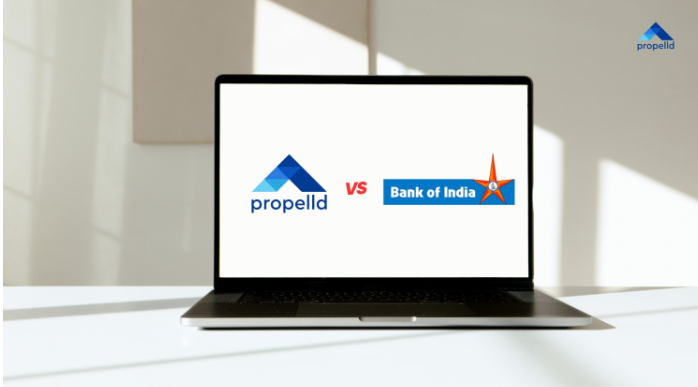About Moratorium Period for Education Loan
With rising education costs, more students rely on education loans to fund their studies. But repayment doesn’t start immediately that’s where the moratorium period helps.
It gives students time to complete their course before EMIs begin, easing financial stress. Understanding this period is key to managing your loan smartly.
Learn how it works and how new age lenders make repayment more flexible for students.
Key Takeaways
What is the Moratorium Period for Education Loan?
The moratorium period in an education loan is the time when a student is not required to start EMI repayments. This break typically covers the entire course duration plus 6–12 months after completion, allowing students to find employment before repayment begins.
In simple terms, it’s a payment holiday that offers financial breathing space to focus on studies without repayment pressure.
As per RBI education loan guidelines, all banks must provide this moratorium, ensuring students have time to secure jobs before starting EMIs.
Key Features of Moratorium Period for Education Loan
The education loan moratorium gives students repayment flexibility while they complete their studies. Here are its key features:
- Repayment Holiday: No EMI payments required during the course and up to 6–12 months after completion.
- Interest Accrual: Interest continues to accrue and its repayment during the moratorium depends on the lender policy.
- Flexible Payment Options: Public banks offer full moratorium; private banks and NBFCs may require partial or full interest payment.
RBI-Mandated Benefit: As per RBI guidelines, all lenders must provide a moratorium on education loans.
Get Education Loan 10X Faster than Banks.
Is Interest Charged During Moratorium Period in Education Loan
Yes, interest on education loans starts accruing from the day the loan amount is disbursed. However, students are not required to pay EMIs until the end of the moratorium period.
During this time, the interest is deferred not waived and gets added to the outstanding balance, leading to higher EMIs later. Some lenders allow students to pay only the interest during the moratorium to prevent accumulation.
Here are the usual norms of different types of lenders across interest payment during moratorium:
Public Sector Banks:
Government banks typically offer a full payment holiday, meaning students don’t need to pay any interest or EMIs until the moratorium ends and repayment begins.
Private Sector Banks:
Private lenders generally require partial interest payments during the moratorium. Some may also initiate EMIs that include a small principal component post-course completion to reduce overall interest burden.
NBFCs:
NBFCs often mandate interest or partial interest payments during the moratorium. The structure varies by lender and product, offering flexibility in repayment terms.
Propelld requires complete interest payments during the moratorium for its domestic education loans, while offering students the choice of complete or partial interest payments for study-abroad loans ensuring flexibility based on loan type and borrower needs.
Do check out our Moratorium and Repayment Policy.
Understanding how interest during the moratorium period affects your total repayment helps in planning better. Compare and choose the best education loan interest rates to reduce long-term financial stress.
Get Education Loan with Higher Chances of Approval
Education Loan Moratorium Period Interest Calculator
An education loan EMI calculator helps you estimate repayments easily. Just enter your loan amount (P), interest rate (R), and tenure (n in months).
The EMI is calculated using:
EMI=P×R×(1+R)n/((1+R)n−1)EMI = P × R × (1 + R)^n / ((1 + R)^n - 1)EMI=P×R×(1+R)n/((1+R)n−1)
You can also use it as an education loan interest calculator or a student loan repayment calculator to test different scenarios.
Even a small change in interest rate can impact total repayment significantly—so compare lenders carefully to find the best education loan rates for your budget.
Use Propelld’s Education Loan EMI Calculator to calculate your EMIs and plan your repayments smartly.
How the Moratorium Impacts Your Repayment Planning
Understanding how the moratorium period affects your EMI schedule is absolutely necessary to have smart repayment planning.
Since interest continues to accrue during this time, your total repayment amount can increase if you don’t make partial payments.
By calculating this impact early using an EMI calculator, you can decide whether to pay simple interest during the moratorium or start full EMIs post-course. This helps balance affordability during studies with long-term savings after graduation.
Tenure of Moratorium Period in Banks
The moratorium period in education loans varies depending on the type of financial institution. While the general structure remains similar covering the course duration plus an additional period, repayment expectations differ significantly across public banks, private banks, and NBFCs.
Public Sector Banks
- Moratorium = Course duration + 6 months to 1 year.
- Students are not required to make any payments during this period.
- Full EMI repayment begins only after the moratorium ends.
Private Sector Banks
- Moratorium = Course duration + up to 1 year, similar to public banks.
- However, most private banks require partial or full interest payment during this time.
NBFCs (Non-Banking Financial Companies)
- Moratorium = Course duration + 12 months.
- Students generally pay simple or partial interest during the moratorium period.
- Repayment of principal starts after the moratorium ends.
Propelld offers similar flexibility providing moratoriums aligned with course duration + up to 12 months, depending on the loan type, ensuring students begin full repayment only after this period.
3 Day Disbursal | 100% Financing | Flexible Repayment Options. Apply Now with Propelld
Can I Extend my Education Loan Moratorium Period?
A Quora user asked the above question.
Yes, you can extend your education loan moratorium period in specific cases but it depends on your lender.
Public sector banks often allow extensions of up to 12 months beyond the course completion date if you’re still seeking employment or pursuing further studies. You’ll need to submit a written request explaining your reason such as job delay, health concerns, or course deferment along with supporting documents.
Private banks and NBFCs are generally stricter. Most do not allow extensions beyond the approved moratorium, though some may consider a short extension on a case-to-case basis for verified reasons.
“In a Reddit thread, one user shared how SBI granted a 6-month moratorium extension after they provided proof of delayed campus placement.”
Another student on Quora shared, “My bank extended my moratorium because I was still job-hunting.”
Pro tip: Even if the moratorium is extended, interest continues to accrue, so making small or partial payments during this time can help reduce the overall repayment burden.
Benefits of Moratorium Period in Education Loans
The education loan moratorium period offers several key advantages that make it easier for students to focus on their studies before beginning repayment.
1. Flexible EMI Repayment Window
Students don’t have to pay EMIs during the course period and for 6–12 months after. This offers financial relief and time to secure employment.
2. No Impact on Credit Score
Skipping EMIs during the moratorium doesn’t hurt your CIBIL score. Once repayment begins, timely payments can help build a strong credit history.
3. Zero Penalty for Non-payment
No penalty is charged for missed EMIs during this period. Some lenders even allow moratorium extensions up to 12 months for job-seeking graduates.
4. Reduced Financial Stress
The payment holiday allows students to focus on academics without financial pressure, ensuring a stress-free education journey.
Learn more about RBI guidelines for moratorium in education loans and how it impacts your repayment strategy.
How to Maximise Moratorium Period Benefits?
Using the moratorium period on your education loan wisely can help reduce your long-term financial burden. Here’s how to maximize its benefits:
- Create a Financial Plan: Estimate your post-graduation income and plan your repayment timeline early. This helps you manage future EMIs with ease.
- Use Tax Benefits: Claim deductions on interest payments under Section 80E of the Income Tax Act. Learn more about education loan tax benefits.
- Build a Strong Credit Score: If your lender allows, make small or partial interest payments during the moratorium to maintain a strong CIBIL score and improve your creditworthiness.
Note: Tax benefits are applicable under the old regime. Please consult your tax advisor for personalized advice.
Can I start EMIs before the moratorium ends?
Absolutely. You can begin earlier if you wish to reduce total interest outgo. Most lenders allow early repayment without penalties.
Does interest get compounded during the moratorium period?
Yes. Unless paid regularly, the interest during the moratorium adds to your loan principal, increasing future EMIs.
Difference Between Moratorium Period and Grace Period
Many students confuse the moratorium period with the grace period in education loans. However, both serve different purposes.
Moratorium Period:
It’s a repayment holiday during which students aren’t required to pay full EMIs usually covering the course duration plus 6–12 months. Public banks often make it optional, while private lenders may require partial or full interest payments.
Grace Period:
This refers to the short window after a missed EMI when borrowers can make payments without penalties commonly seen in other loan types.
Example:
If you take an education loan in January 2024 with a 12-month moratorium, your EMIs start in January 2025, giving you time to find employment before repayment.
Compare education loan repayment options and understand how Propelld offers flexible EMI holidays and up to 10 years of repayment tenure.
What is the Locking Period for Education Loan?
Locking Period or tenure of education loan is up to 15 years usually, including the moratorium period.
Which Banks Offer Moratorium Period in India?
Most Indian banks and NBFCs provide a moratorium period of up to 12 months after course completion. Terms may vary by lender and course type.
Popular Banks Offering Moratorium Benefits:
- State Bank of India (SBI)
- Punjab National Bank (PNB)
- HDFC Bank
- ICICI Bank
- Axis Bank
- Bank of Baroda
- Canara Bank
- Union Bank of India
- Indian Bank
- IDBI Bank
You can also explore NBFC education loan options like Propelld, offering flexible repayment, quick approval, and student-friendly moratorium benefits.
Education Loan Repayment Rules in India
Education loan repayment rules in India are governed by RBI and follow a structured approach to protect student borrowers.
- Repayment typically begins after the moratorium period- course duration plus up to one year.
- Borrowers can choose flexible EMI plans, part-pay interest, or prepay anytime depending on the lender.
- Public sector banks follow uniform repayment schedules under RBI’s Model Education Loan Scheme.
- NBFCs like Propelld offer custom tenures and negotiable foreclosure charges for added convenience.
RBI Guidelines on Education Loan Moratorium Period
The Reserve Bank of India (RBI) mandates all scheduled commercial banks to offer a moratorium period on education loans. As per the latest RBI education loan guidelines, every student borrower must receive a repayment holiday that covers the entire course duration plus up to one year after course completion.
This ensures students have sufficient time to secure employment before starting EMI payments, reducing default risk and financial stress.
If you’re exploring education loans with flexible moratoriums, NBFCs like Propelld offer up to 100% fee coverage, competitive interest rates, and higher approval chances than traditional banks.
Do check out all the metrics and other details at Propelld’s Transparency Policy.
The education loan moratorium period is bliss for students who want to pursue higher education abroad. Not only does the moratorium period ease the EMI burden during student life, but it also refrains you from paying penalties during study.
If you want to pursue higher studies and look for an education loan, Propelld offers tailored financing solutions with a moratorium period. These solutions allow you to provide smaller EMIs during your course. We have a series of partner institutes that provide super-easy education loans. You can determine the amount you need to pay monthly after taking an education loan with the help of the education loan calculator with a moratorium period.














.svg)